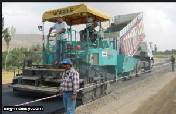3d Technology Simplifies Concrete Paving Operations 6 From 8

“Now that we have gotten the hang of it, I feel that our ride quality has improved.
There is much less room for error.
You are not constantly checking pins. You don’t have to worry about other things affecting the String line – tightness, somebody missing a number.
It takes the human error out of it.”
Allega Jr.
Believes the learning curve for 3D paving may be a little easier than it is with the earthmoving solution.
While there are similarities, fewer people are required to understand how 3D paving works.
“With 3D dirt work, every single operator needs to learn how to use it. With 3D paving, three to five key guys learn it and everybody else does the job the way they have always done it,” he notes.
“I can’t think of any project where you could pave string less and you would not want to do it.
If it were up to me, I would never set a string line the rest of my life.”
Paving Machines Adapt to 3D It is fairly common for today’s pavers to come pre-wired for 3D systems.
“It is pretty standard now to buy a paving machine that is ready to ‘plug and play’ with these strings less systems,” says Niederriter.
“With the initial pavers, you had to get a black box for them.
You had to do a little more wiring.”
GOMACO, which provides systems for paving, curb and gutter or trimming applications, has been working on the development of 3D Paving and implementing systems on its pavers since1999.
“We helped pioneer the concept of String less slip form paving” says Godbersen.
“We have a close working relationship with the three major suppliers of 3D guidance, including Topcon, Leica Geo systems and Trimble.



